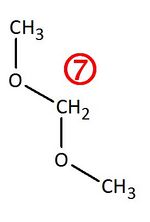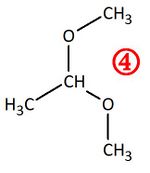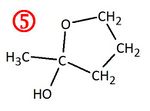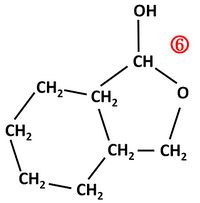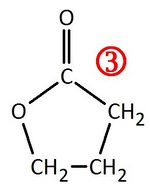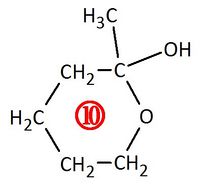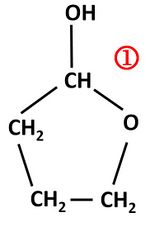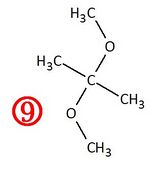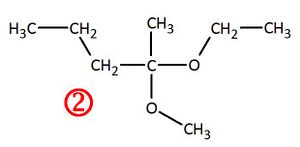|
|
| Zeile 25: |
Zeile 25: |
| | <div class="zuordnungs-quiz"> | | <div class="zuordnungs-quiz"> |
| | {| | | {| |
| − | | Halbacetal || [[Datei:RMGHalbacetal_Bsp1.jpg|150px]] || [[Datei:RMGHalbacetal_Bsp2.jpg|150px]] | + | | Halbacetal || [[Datei:RMGHalbacetal_Bsp1.jpg|150px]] || [[Datei:RMGHalbacetal_Bsp2.jpg|200px]] |
| | |- | | |- |
| | | Vollacetal || [[Datei:RMGVollacetal_Bsp1.jpg|150px]] || [[Datei:RMGVollacetal_Bsp2.jpg|150px]] | | | Vollacetal || [[Datei:RMGVollacetal_Bsp1.jpg|150px]] || [[Datei:RMGVollacetal_Bsp2.jpg|150px]] |
| | |- | | |- |
| − | | Halbketal || [[Datei:RMGHalbetal_Bsp1.jpg|150px]] || [[Datei:RMGHalbetal_Bsp2.jpg|150px]] | + | | Halbketal || [[Datei:RMGHalbetal_Bsp1.jpg|150px]] || [[Datei:RMGHalbetal_Bsp2.jpg|200px]] |
| | |- | | |- |
| − | | Vollketal || [[Datei:RMGVollketal_Bsp1.jpg|300px]] || [[Datei:RMGVollketal_Bsp2.jpg|300px]] | + | | Vollketal || [[Datei:RMGVollketal_Bsp1.jpg|300px]] || [[Datei:RMGVollketal_Bsp2.jpg|150px]] |
| | |- | | |- |
| − | | Ester || [[Datei:RMGintrMolEster_Bsp1.jpg|150px]] || [[Datei:RMGintrMolEster_Bsp2.jpg|150px]] | + | | Ester || [[Datei:RMGintrMolEster_Bsp1.jpg|150px]] || [[Datei:RMGintrMolEster_Bsp2.jpg|300px]] |
| | |} | | |} |
| | | | |
| | </div> | | </div> |
| − |
| |
| − | [[Datei:RMGHalbacetal_Bsp2.jpg|150px]]
| |
| − | [[Datei:RMGVollacetal_Bsp2.jpg|150px]]
| |
| − | [[Datei:RMGHalbetal_Bsp2.jpg|150px]]
| |
| − | [[Datei:RMGVollketal_Bsp2.jpg|300px]]
| |
| − | [[Datei:RMGintrMolEster_Bsp2.jpg|150px]]
| |
Version vom 31. Mai 2011, 19:19 Uhr
Die Darstellung der Tabelle erfolgt nur optimal, wenn die Bildschirmauflösung in der Breite mehr als 1280 Pixel beträgt!
Stoffgruppe
(funktionelle Gruppe) |
einfachster
Vertreter |
Name |
Benennung:
Enden auf... |
typische
Reaktion |
Beispiel
|
Alkane
(---) |
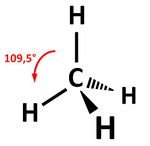 |
Methan |
-an |
radikalische
Substitution
Belichtung nötig! |
Ethan + Brom  Bromethan + HBr Bromethan + HBr
C2H6 + Br2  C2H5Br + HBr C2H5Br + HBr
|
Alkene
(Doppelbindung) |
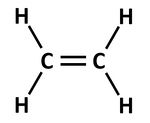 |
Ethen |
-en |
elektrophile
Addition,
Polymerisation |
Ethen + Brom  1,2-Dibromethan 1,2-Dibromethan
C2H4 + Br2  C2H4Br2 C2H4Br2
Hydrierung:
C2H4 + H2  C2H6 C2H6
Polymerisation:
C2H4  (-CH2-CH2-)n (-CH2-CH2-)n
|
Alkine
(Dreifachbindung) |
 |
Ethin |
-in |
elektrophile
Addition,
Polymerisation |
s. Alkene
|
Alkohole
(Hydroxy-Gruppe) |
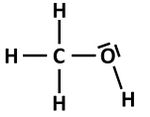 |
Methanol |
-ol |
können oxidiert
werden |
Redoxreaktion:
(vereinfacht)
Ethanol + Kupferoxid  Ethanal + Kupfer Ethanal + Kupfer
Oxidation (sauer):
C2H5OH + 2 H2O  C2H4O + 2 e- + 2 H3O+ C2H4O + 2 e- + 2 H3O+
Reduktion (sauer):
CuO + 2 e- + 2 H3O+ Cu + 3 H2O Cu + 3 H2O
allgemein gilt:
primärer Alkohol  Aldehyd Aldehyd  Carbonsäure Carbonsäure
sekundärer Alkohol  Keton Keton
tertiärer Alkohol  nur unter Zerstörung des C-Gerüstes nur unter Zerstörung des C-Gerüstes
|
Aldehyde
(endständige
Carbonylgruppe) |
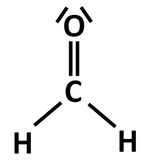 |
Methanal
(Formaldehyd) |
-al |
nukleophile
Addition |
Bildung von Halbacetalen:
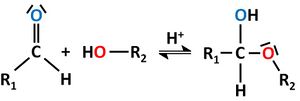
Mit einem weiteren Alkohol
bildet sich unter Wasserabspaltung
ein Vollacetal
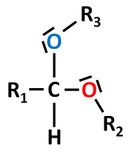
|
Ketone
(Carbonylgruppe) |
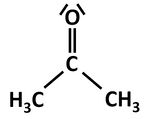 |
Propanon
(Aceton) |
-ol |
nukleophile
Addition |
- wie Halbacetalbildung, nur ist die
Carbonylgruppe nicht endständig -
Es entstehen Halbketale und Vollketale:
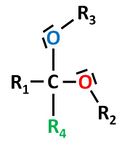
|
Carbonsäuren
(Carboxygruppe) |
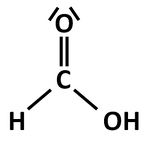 |
Methansäure |
-säure |
Esterkondensation |
Essigsäure und Ethanol  Essigsäuremethylester + Wasser Essigsäuremethylester + Wasser
Allgemein gilt:

|

 Bromethan + HBr
Bromethan + HBr 








